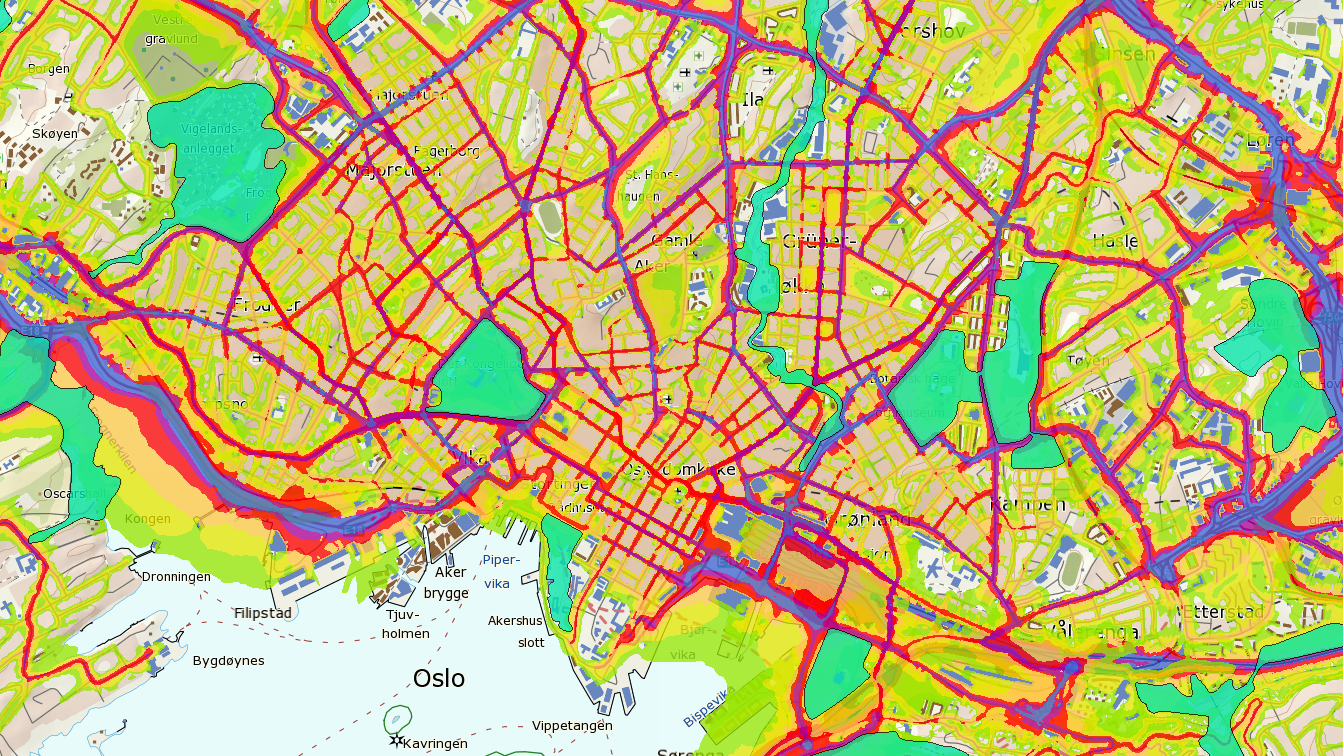Classification of Environmental Sound using IoT sensors
Jon Nordby jon@soundsensing.no
November 19, 2019
Introduction
Jon Nordby
Internet of Things specialist
- B.Eng in Electronics
- 9 years as Software developer. Embedded + Web
- M. Sc in Data Science
Now:
- CTO at Soundsensing
- Machine Learning Consultant
Soundsensing
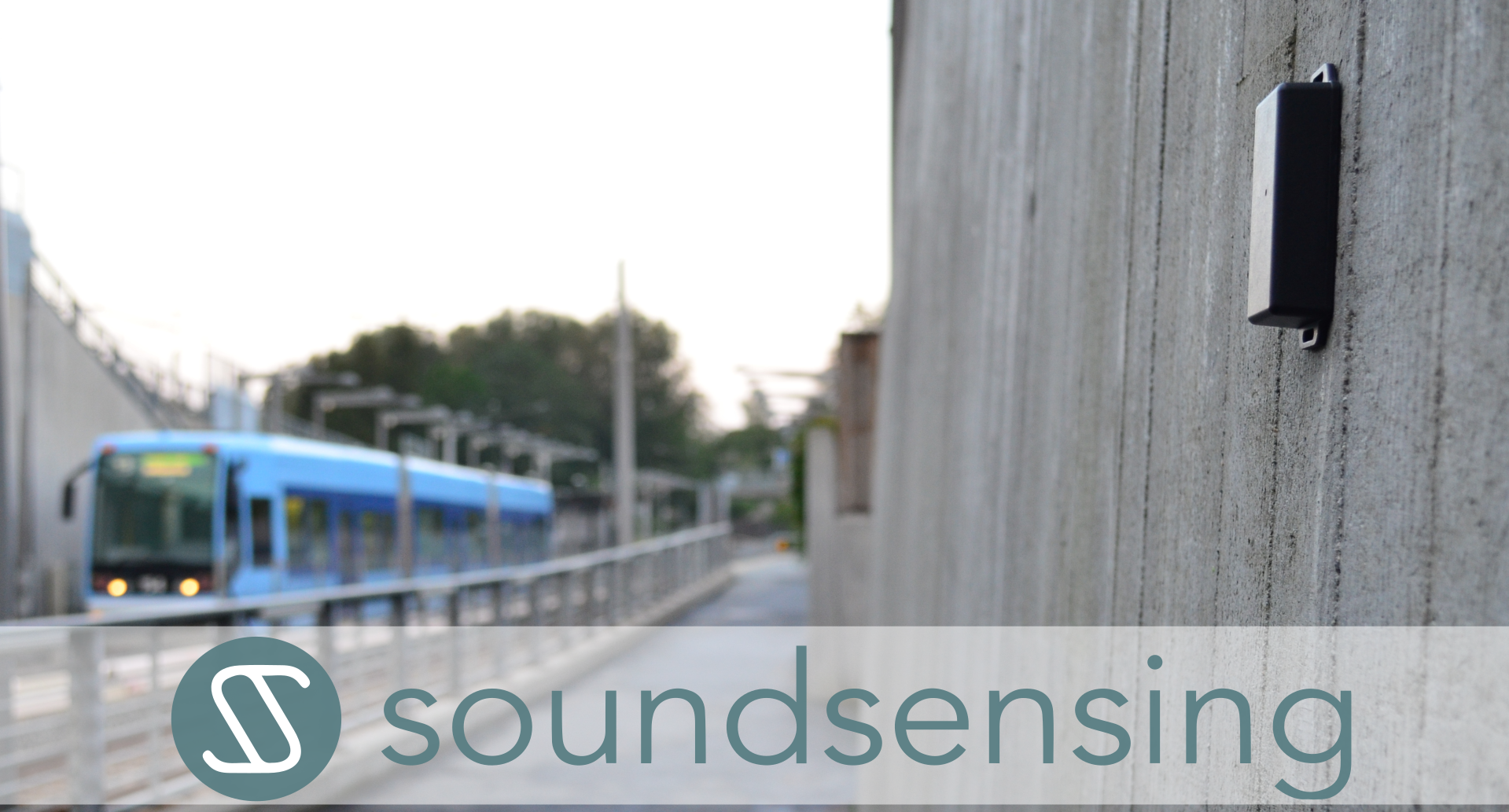
Dashboard
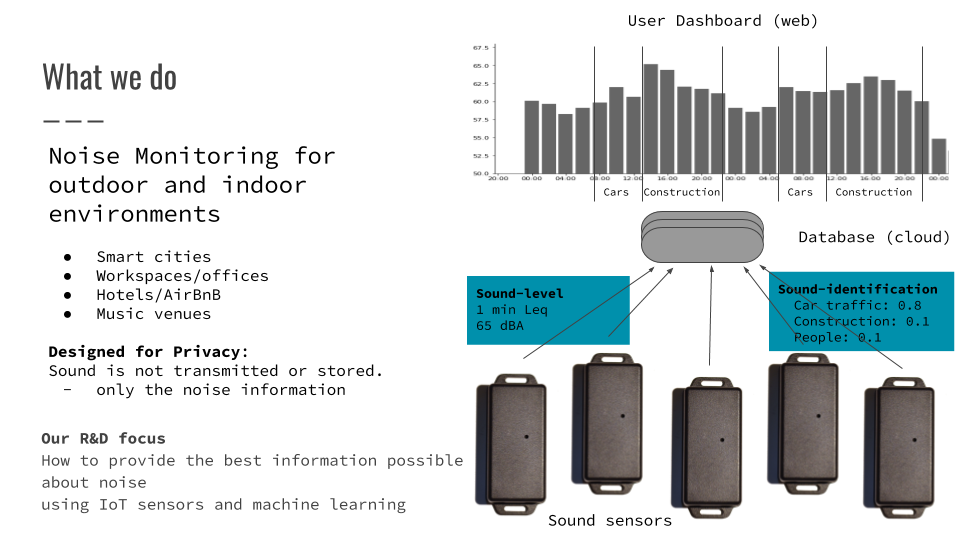
Thesis
Environmental Sound Classification on Microcontrollers using Convolutional Neural Networks

Wireless Sensor Networks
- Want: Wide and dense coverage
- Need: Sensors need to be low-cost
- Opportunity: Wireless reduces costs
- Challenge: Power consumption
Sensor Network Architectures
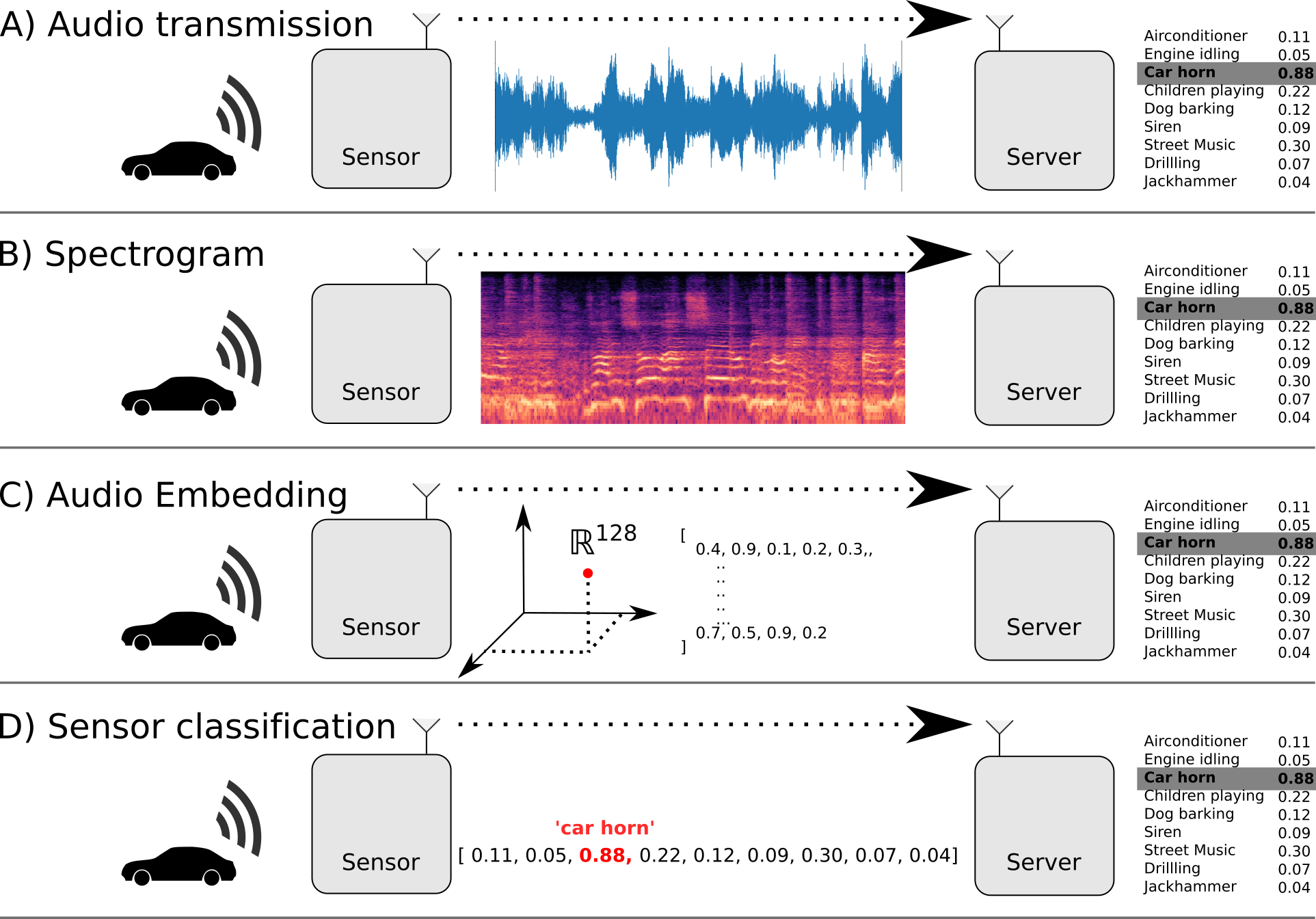
Audio Machine Learning on low-power sensors
What do you mean by low-power?
Want: 1 year lifetime for palm-sized battery
Need: <1mW system power
General purpose microcontroller
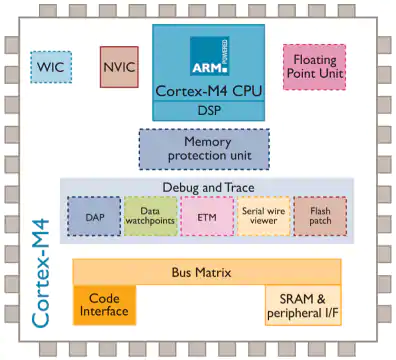
STM32L4 @ 80 MHz. Approx 10 mW.
- TensorFlow Lite for Microcontrollers (Google)
- ST X-CUBE-AI (ST Microelectronics)
FPGA
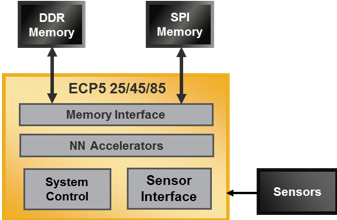
Human presence detection. VGG8 on 64x64 RGB image, 5 FPS: 7 mW.
Audio ML approx 1 mW
Neural Network co-processors
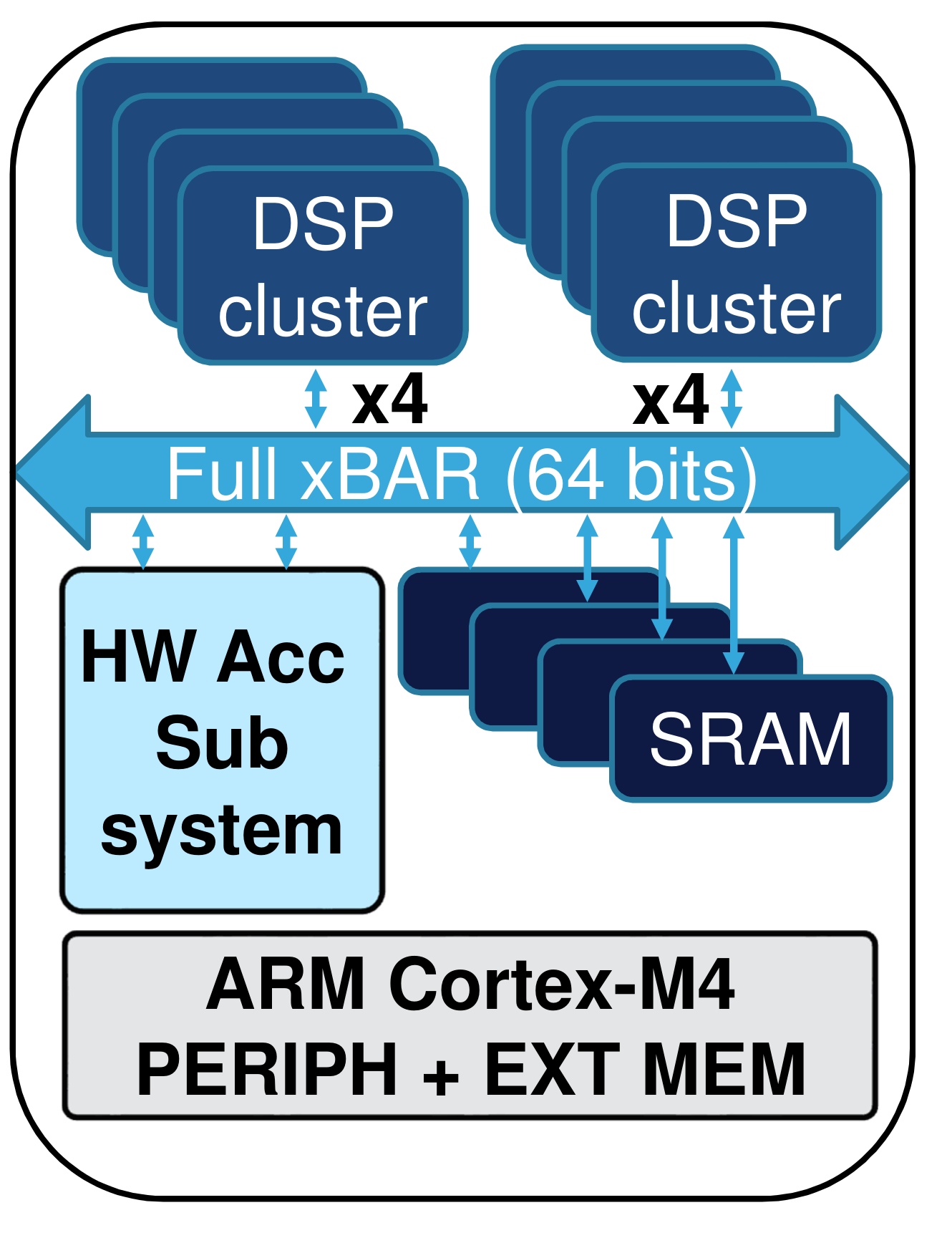
2.9 TOPS/W. AlexNet, 1000 classes, 10 FPS. 41 mWatt
Audio models probably < 1 mWatt.
On-edge Classification of Noise
Environmental Sound Classification
Given an audio signal of environmental sounds,
determine which class it belongs to
- Widely researched. 1000 hits on Google Scholar
- Datasets. Urbansound8k (10 classes), ESC-50, AudioSet (632 classes)
- 2017: Human-level performance on ESC-50
Urbansound8k
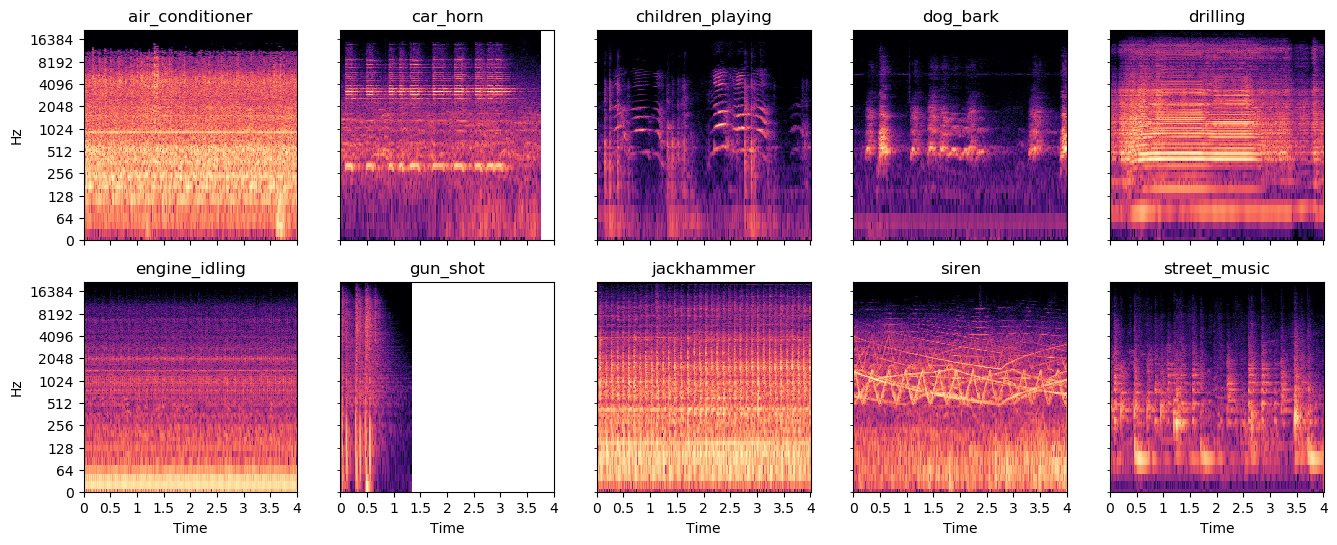
Existing work
- Convolutional Neural Networks dominate
- Techniques come from image classification
- Mel-spectrogram input standard
- End2end models: getting close in accuracy
- “Edge ML” focused on mobile-phone class HW
- “Tiny ML” (sensors) just starting
Model requirements
With 50% of STM32L476 capacity:
- 64 kB RAM
- 512 kB FLASH memory
- 4.5 M MACC/second
Existing models

eGRU: running on ARM Cortex-M0 microcontroller, accuracy 61% with non-standard evaluation
Pipeline

Models
Strategies for shrinking Convolutional Neural Network
Reduce input dimensionality
- Lower frequency range
- Lower frequency resolution
- Lower time duration in window
- Lower time resolution
Reduce overlap

Models in literature use 95% overlap or more. 20x penalty in inference time!
Often low performance benefit. Use 0% (1x) or 50% (2x).
Depthwise-separable Convolution
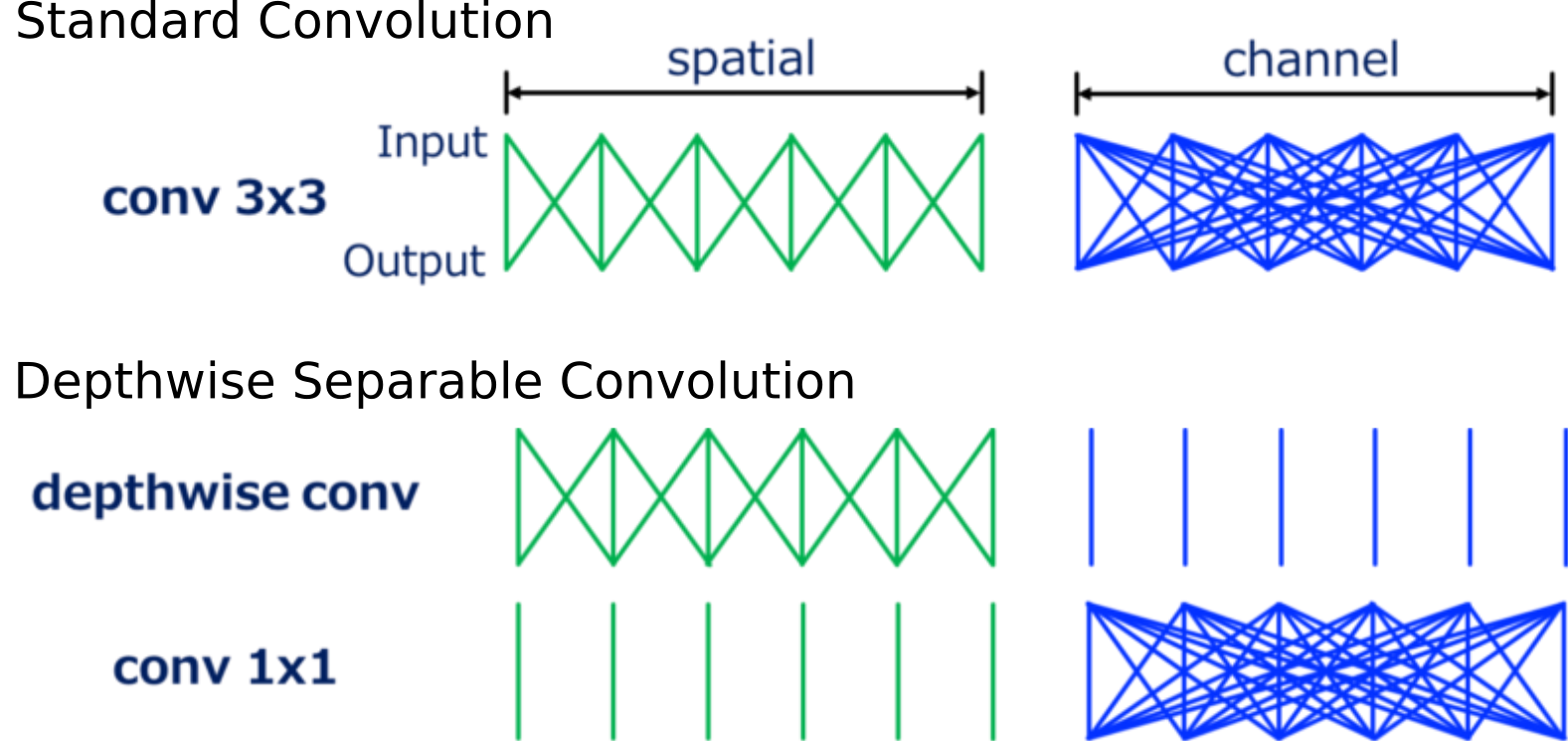
MobileNet, “Hello Edge”, AclNet. 3x3 kernel,64 filters: 7.5x speedup
Spatially-separable Convolution

EffNet, LD-CNN. 5x5 kernel: 2.5x speedup
Downsampling using max-pooling
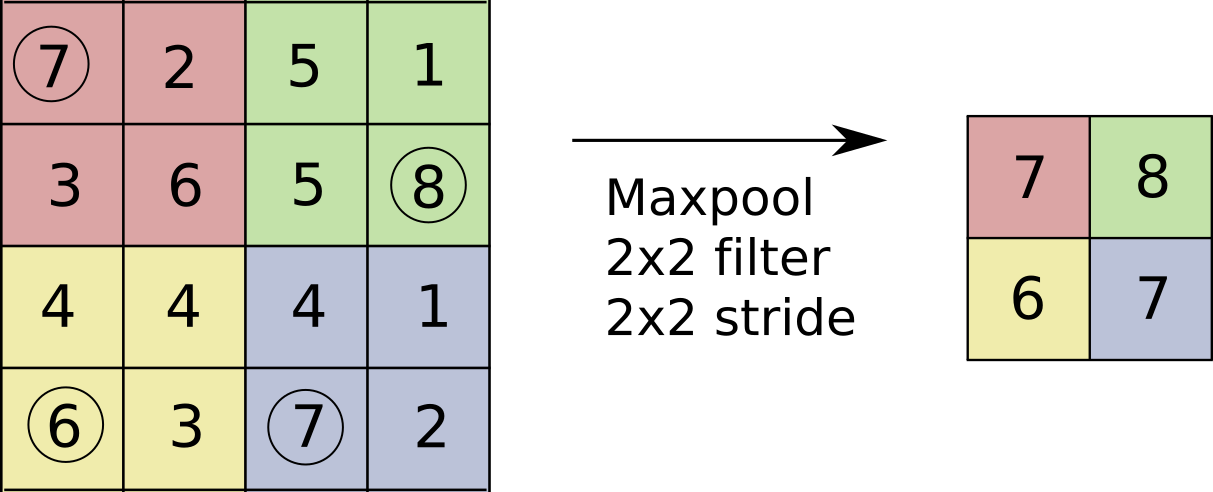
Wasteful? Computing convolutions, then throwing away 3/4 of results!
Downsampling using strided convolution
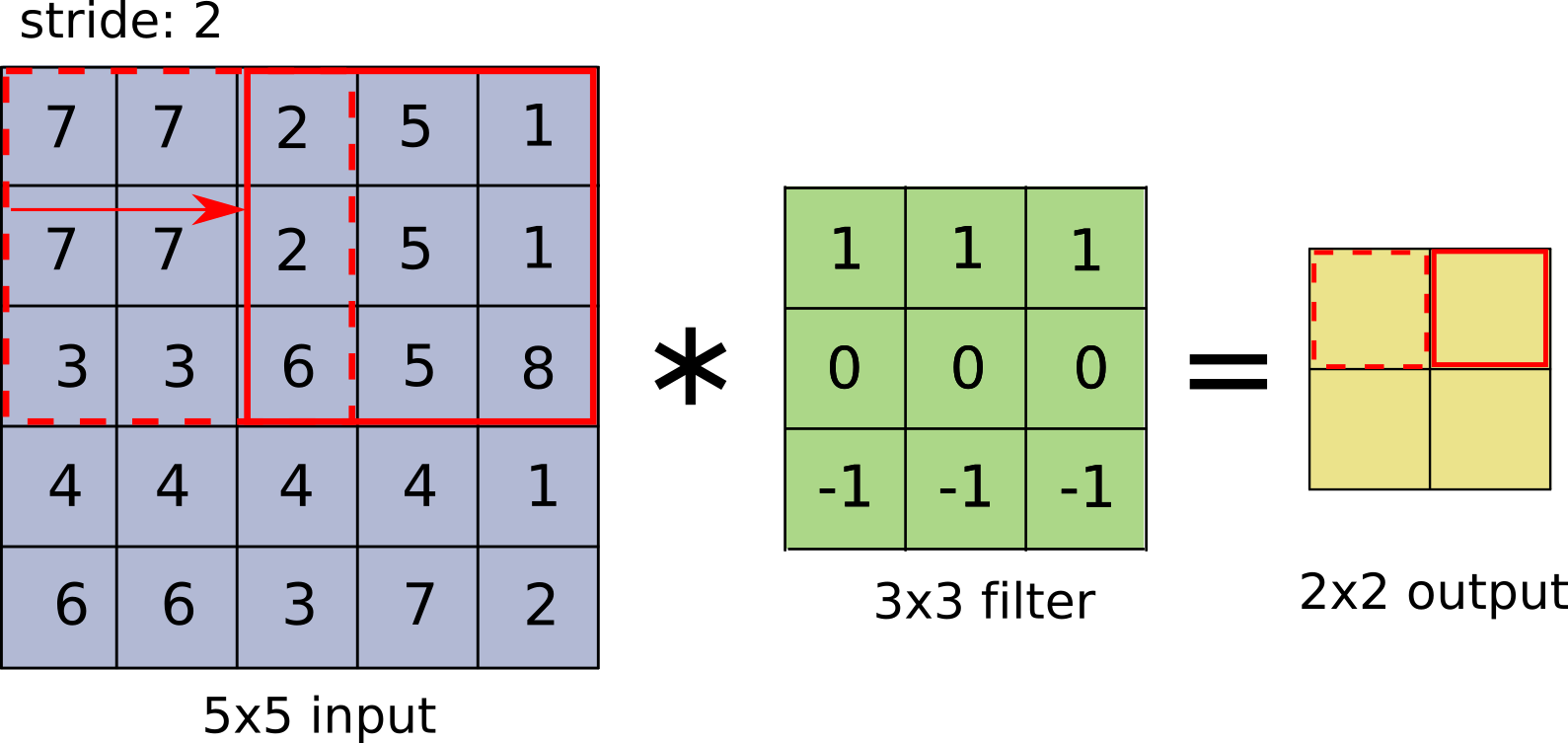
Striding means fewer computations and “learned” downsampling
Model comparison
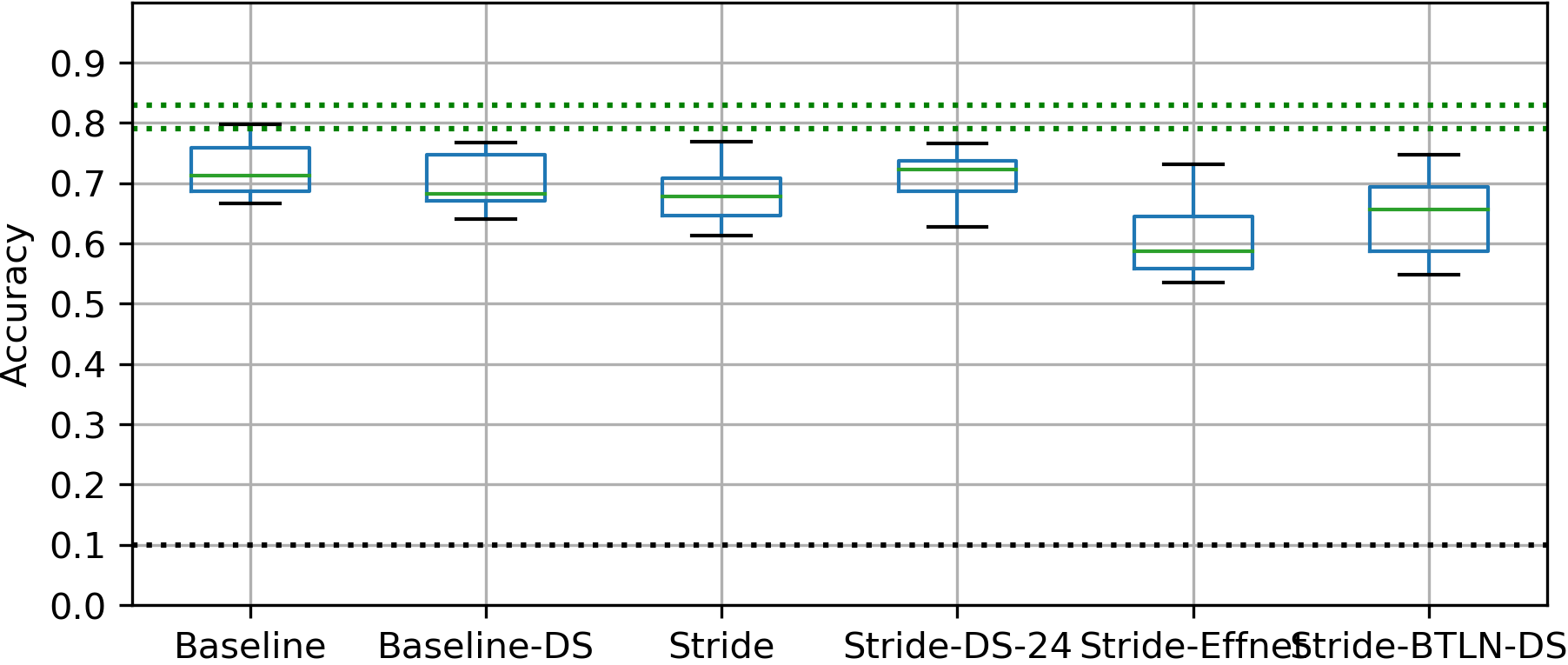
Performance vs compute
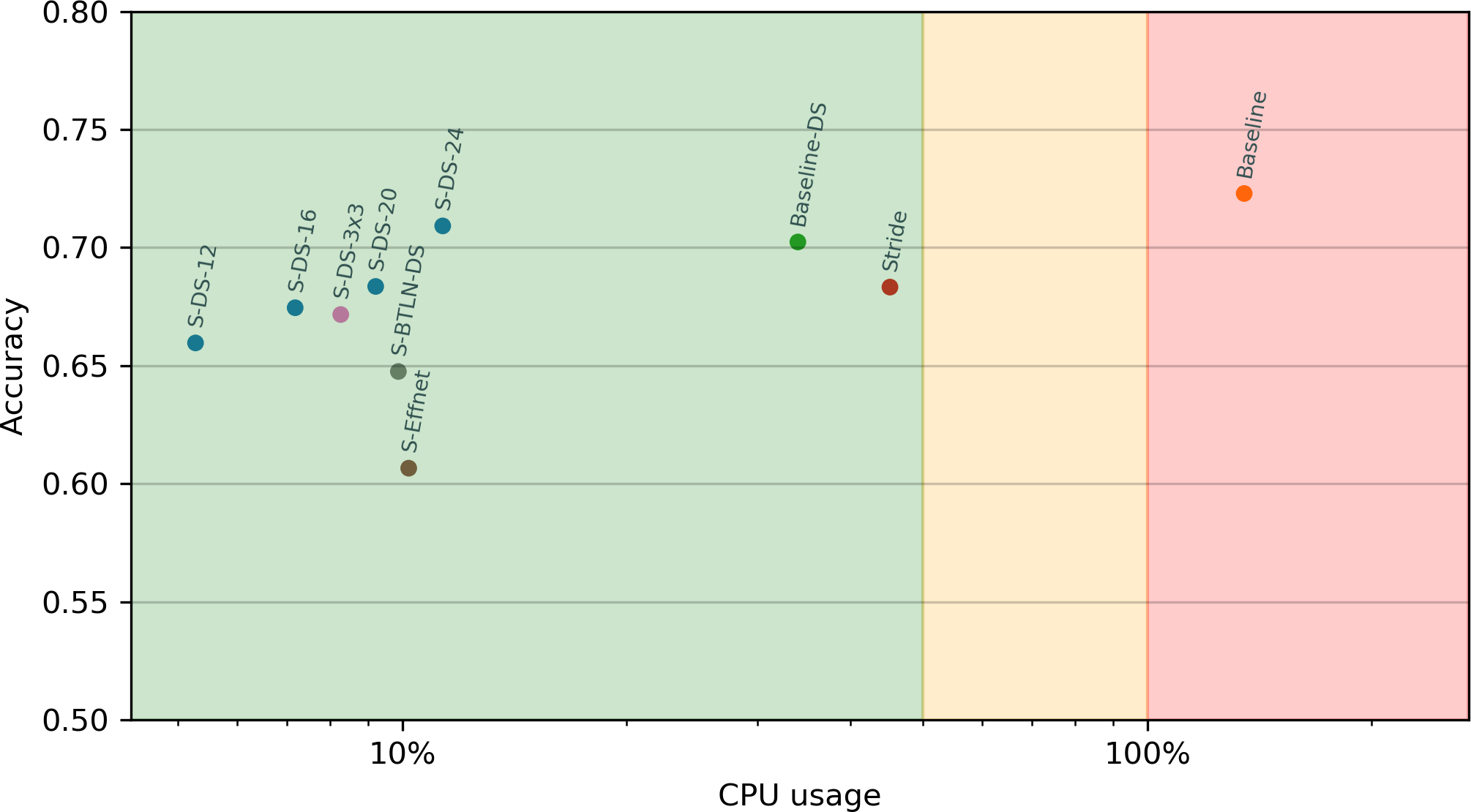
:::
- Performance of Strided-DS-24 similar to Baseline despite 12x the CPU use
- Suprising? Stride alone worse than Strided-DS-24
- Bottleneck and EffNet performed poorly
- Practical speedup not linear with MACC
:::
Quantization
Inference can often use 8 bit integers instead of 32 bit floats
- 1/4 the size for weights (FLASH) and activations (RAM)
- 8bit SIMD on ARM Cortex M4F: 1/4 the inference time
- Supported in X-CUBE-AI 4.x (July 2019)
Conclusions
- Able to perform Environmental Sound Classification at
~ 10mWpower, - Using general purpose microcontroller, ARM Cortex M4F
- Best performance: 70.9% mean accuracy, under 20% CPU load
- Highest reported Urbansound8k on microcontroller (over eGRU 62%)
- Best architecture: Depthwise-Separable convolutions with striding
- Quantization enables 4x bigger models (and higher perf)
- With dedicated Neural Network Hardware
Further Research
Waveform input to model
- Preprocessing. Mel-spectrogram: 60 milliseconds
- CNN. Stride-DS-24: 81 milliseconds
- With quantization, spectrogram conversion is the bottleneck!
- Convolutions can be used to learn a Time-Frequency transformation.
Can this be faster than the standard FFT? And still perform well?
On-sensor inference challenges
- Reducing power consumption. Adaptive sampling
- Efficient training data collection in WSN. Active Learning?
- Real-life performance evaluations. Out-of-domain samples
Wrapping up
Summary
- Noise pollution is a growing problem
- Wireless Sensor Networks can used to quantify
- Noise Classification can provide more information
- Want high density of sensors. Need to be low cost
- On-sensor classification desirable for power/cost and privacy
More resources
Machine Hearing. ML on Audio
Machine Learning for Embedded / IoT
Thesis Report & Code
Questions
?
Email: jon@soundsensing.no
Come talk to me!
- Noise Monitoring sensors. Pilot projects for 2020?
- Environmental Sound, Wireless Sensor Networks for Audio. Research partnering?
- “On-edge” / Embedded Device ML. Happy to advise!
Email: jon@soundsensing.no
Thesis results
Model comparison

List of results

Confusion

Grouped classification
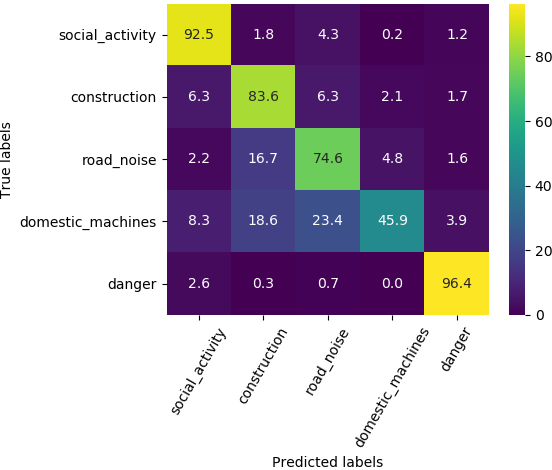
Foreground-only
Unknown class

Experimental Details
All models

Methods
Standard procedure for Urbansound8k
- Classification problem
- 4 second sound clips
- 10 classes
- 10-fold cross-validation, predefined
- Metric: Accuracy
Training settings

Training
- NVidia RTX2060 GPU 6 GB
- 10 models x 10 folds = 100 training jobs
- 100 epochs
- 3 jobs in parallel
- 36 hours total
Evaluation
For each fold of each model
- Select best model based on validation accuracy
- Calculate accuracy on test set
For each model
- Measure CPU time on device
Your model will trick you
And the bugs can be hard to spot
FAIL: Integer truncation

FAIL. Dropout location

Background
Mel-spectrogram
Noise Pollution
Reduces health due to stress and loss of sleep
In Norway
- 1.9 million affected by road noise (2014, SSB)
- 10’000 healty years lost per year (Folkehelseinstituttet)
In Europe
- 13 million suffering from sleep disturbance (EEA)
- 900’000 DALY lost (WHO)
Noise Mapping
Simulation only, no direct measurements
